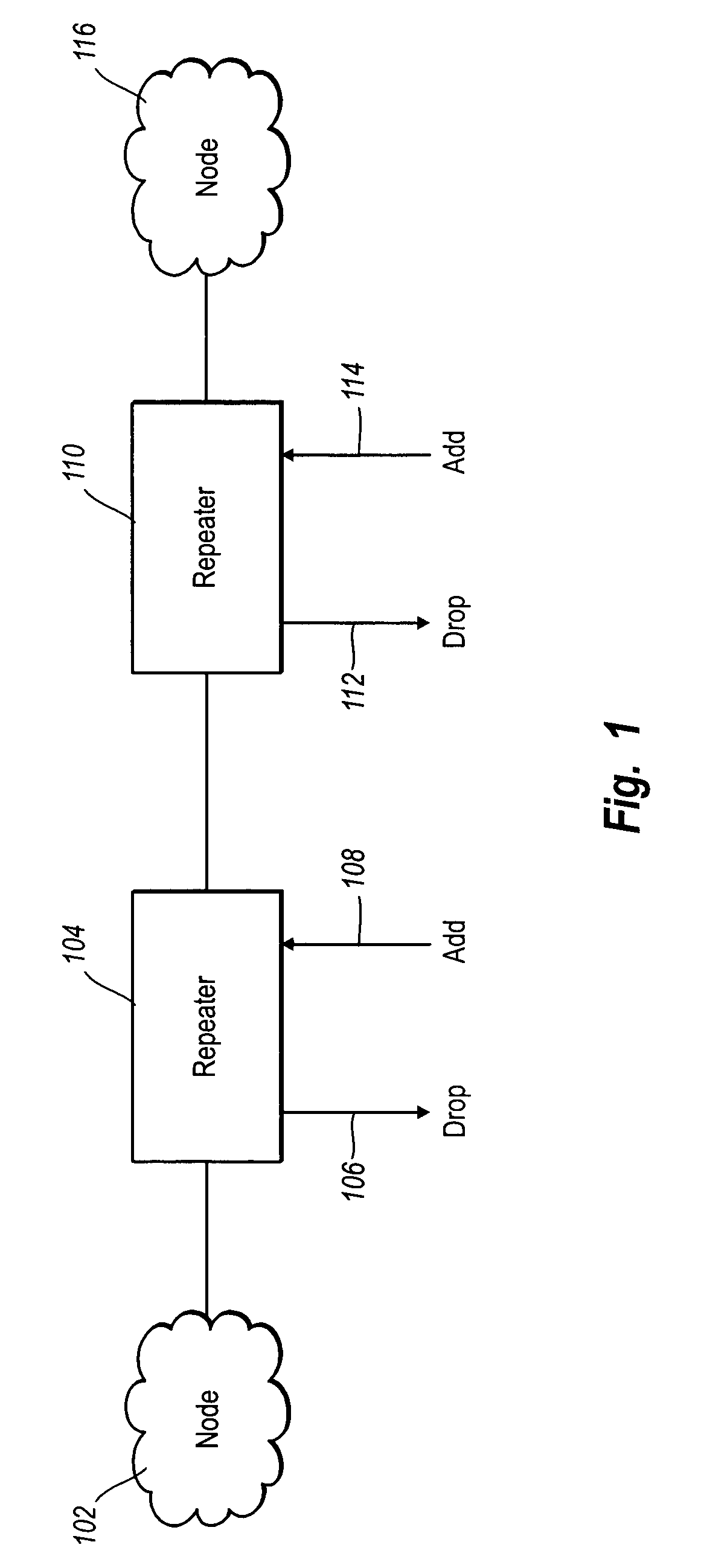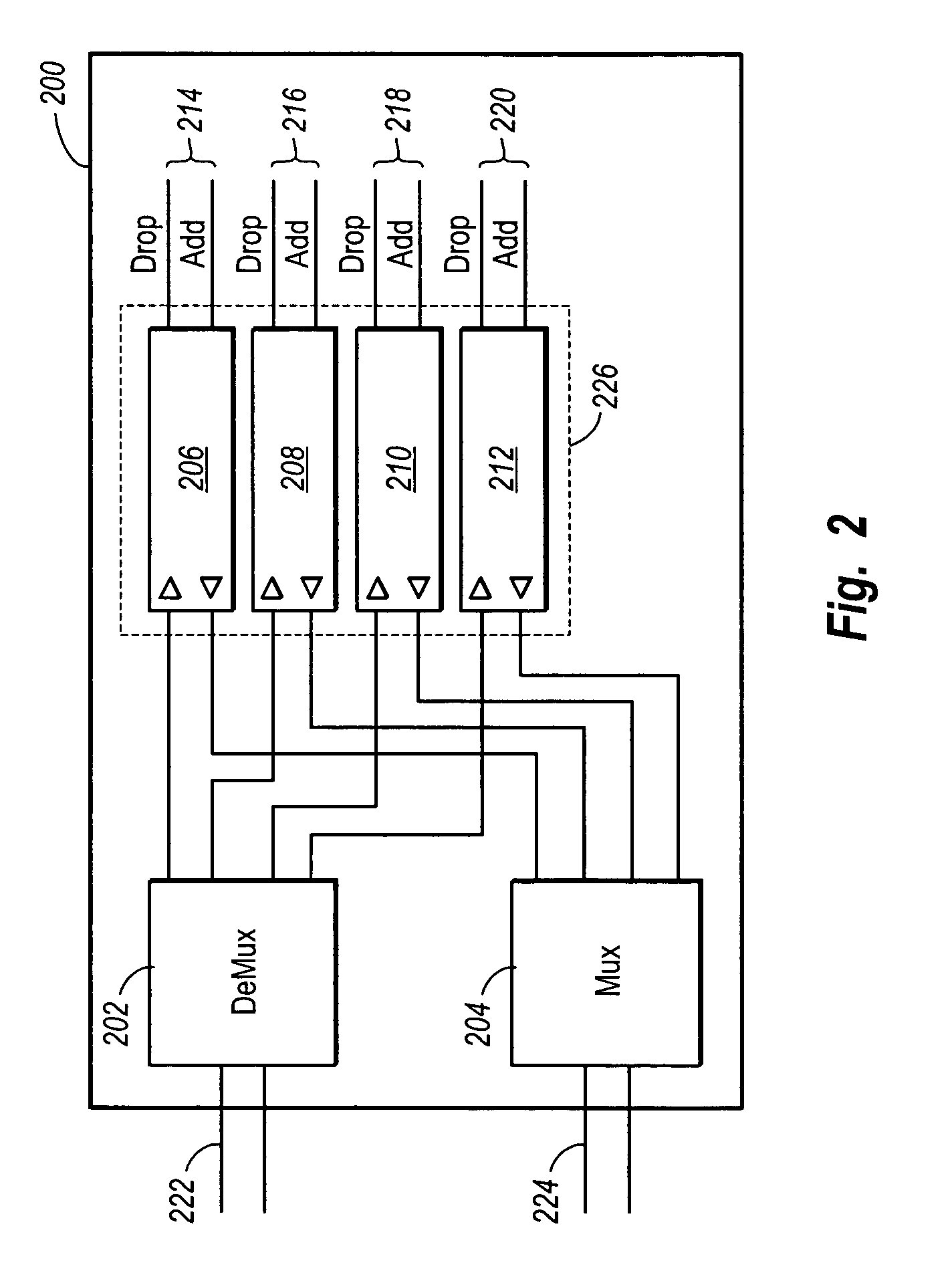Scalable transceiver based repeater
a transceiver and repeater technology, applied in electromagnetic repeaters, wavelength-division multiplex systems, electrical apparatus, etc., can solve the problems of limited transmission distance of optical signals, degraded optical signals carried by optical networks, and limited distance that optical signals can be transmitted, so as to achieve less expensive manufacturing
- Summary
- Abstract
- Description
- Claims
- Application Information
AI Technical Summary
Benefits of technology
Problems solved by technology
Method used
Image
Examples
Embodiment Construction
[0022]The present invention relates to systems and methods for transmitting optical signals and more particularly to a scalable transceiver based repeater for repeating or retransmitting optical signals. In one embodiment, the repeater includes a transceiver for at least some of the channels or wavelengths in an optical signal. Each transceiver detects a particular channel (or wavelength) of an optical signal with an optical receive portion that is typically referred to as a receiver optical sub-assembly (ROSA). Each transceiver also has a corresponding transmit portion often referred to as a transmitter optical sub-assembly (TOSA) to transmit the wavelength of the channel received by the receive portion of the transceiver.
[0023]One of skill in the art can appreciate that as the channels, also referred to herein as signals, are processed by the ROSA or the TOSA, the channels or signals may take either an electrical or optical form. A ROSA, for example, receives and optical channel o...
PUM
 Login to View More
Login to View More Abstract
Description
Claims
Application Information
 Login to View More
Login to View More - R&D
- Intellectual Property
- Life Sciences
- Materials
- Tech Scout
- Unparalleled Data Quality
- Higher Quality Content
- 60% Fewer Hallucinations
Browse by: Latest US Patents, China's latest patents, Technical Efficacy Thesaurus, Application Domain, Technology Topic, Popular Technical Reports.
© 2025 PatSnap. All rights reserved.Legal|Privacy policy|Modern Slavery Act Transparency Statement|Sitemap|About US| Contact US: help@patsnap.com



